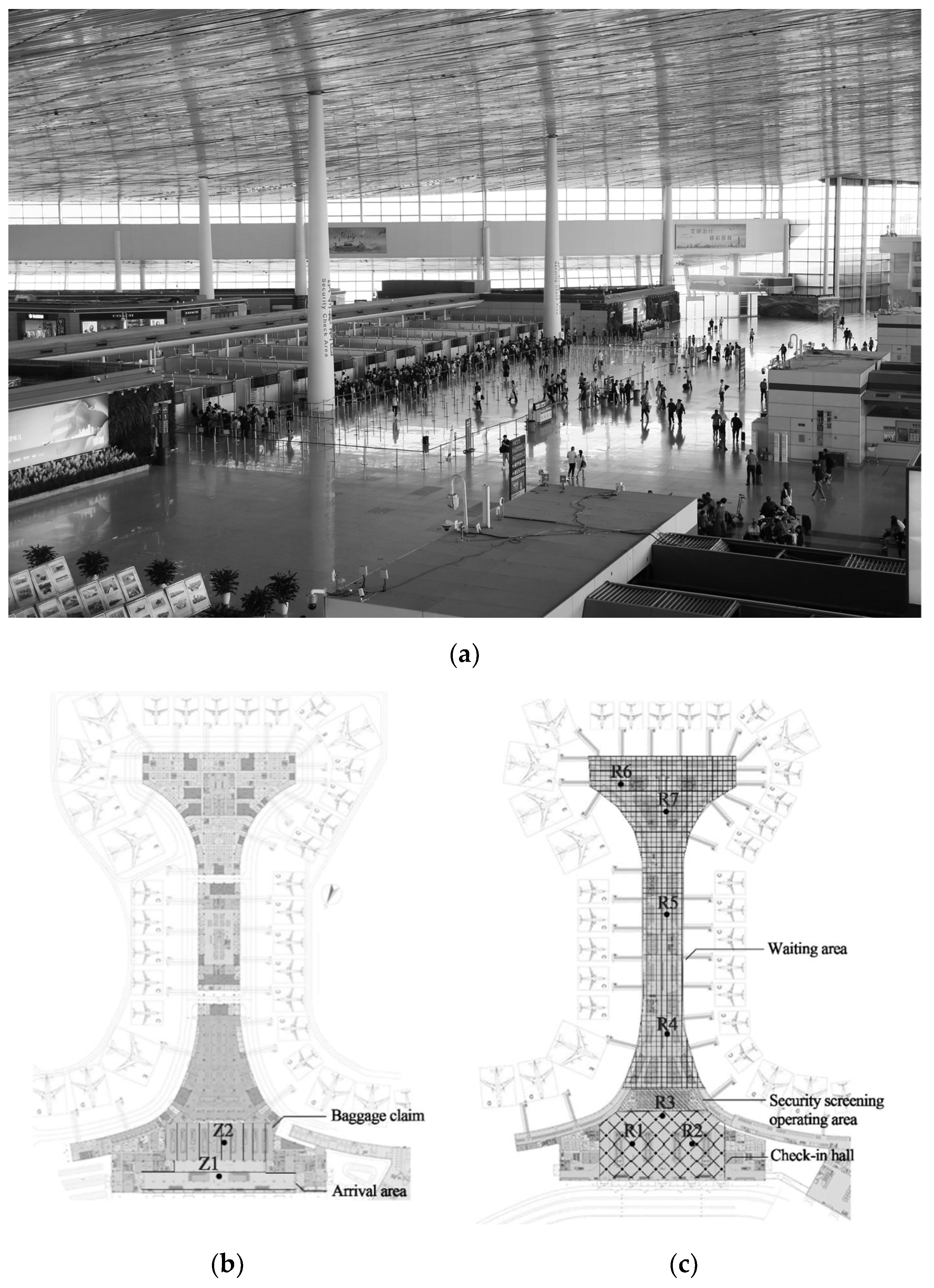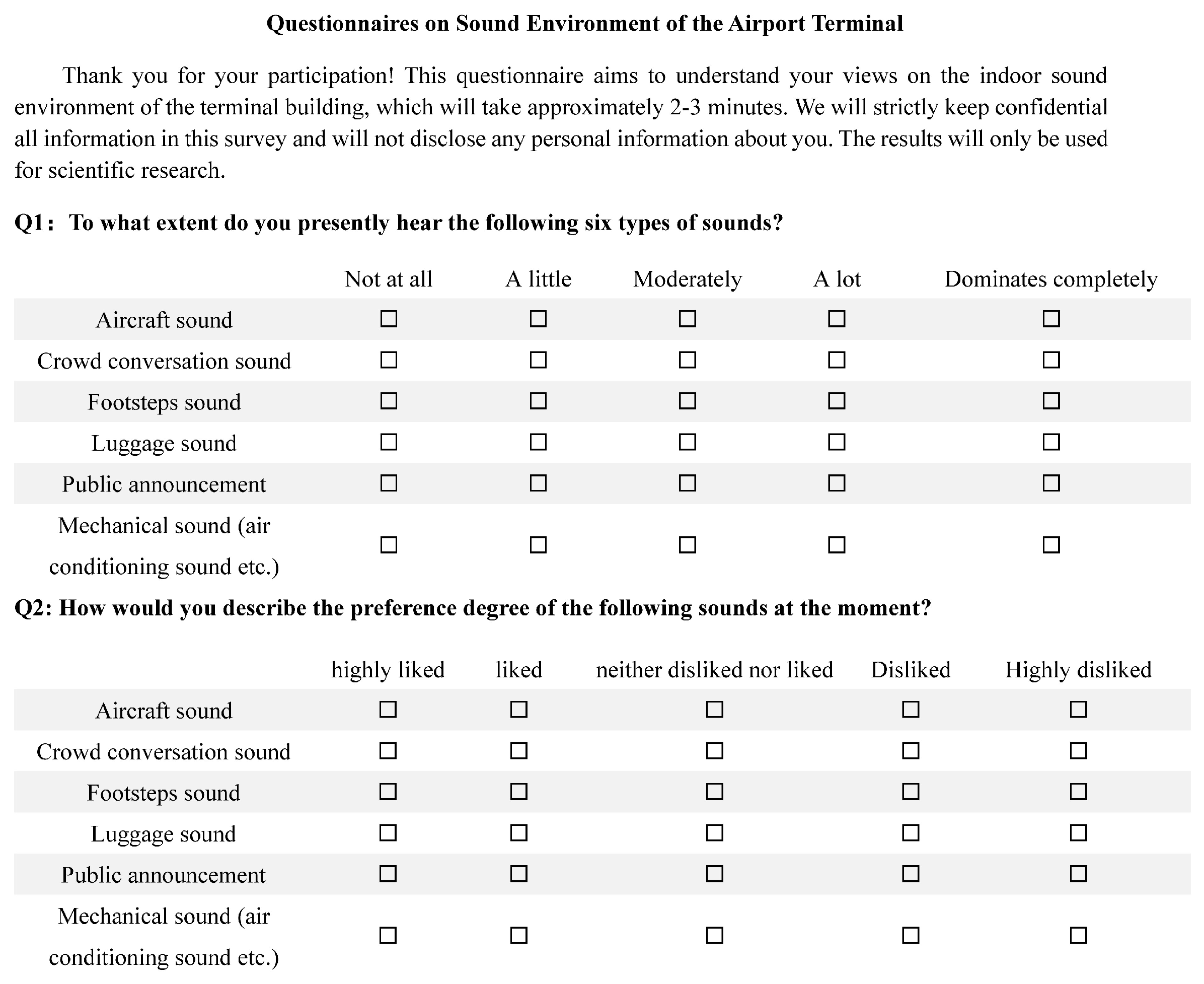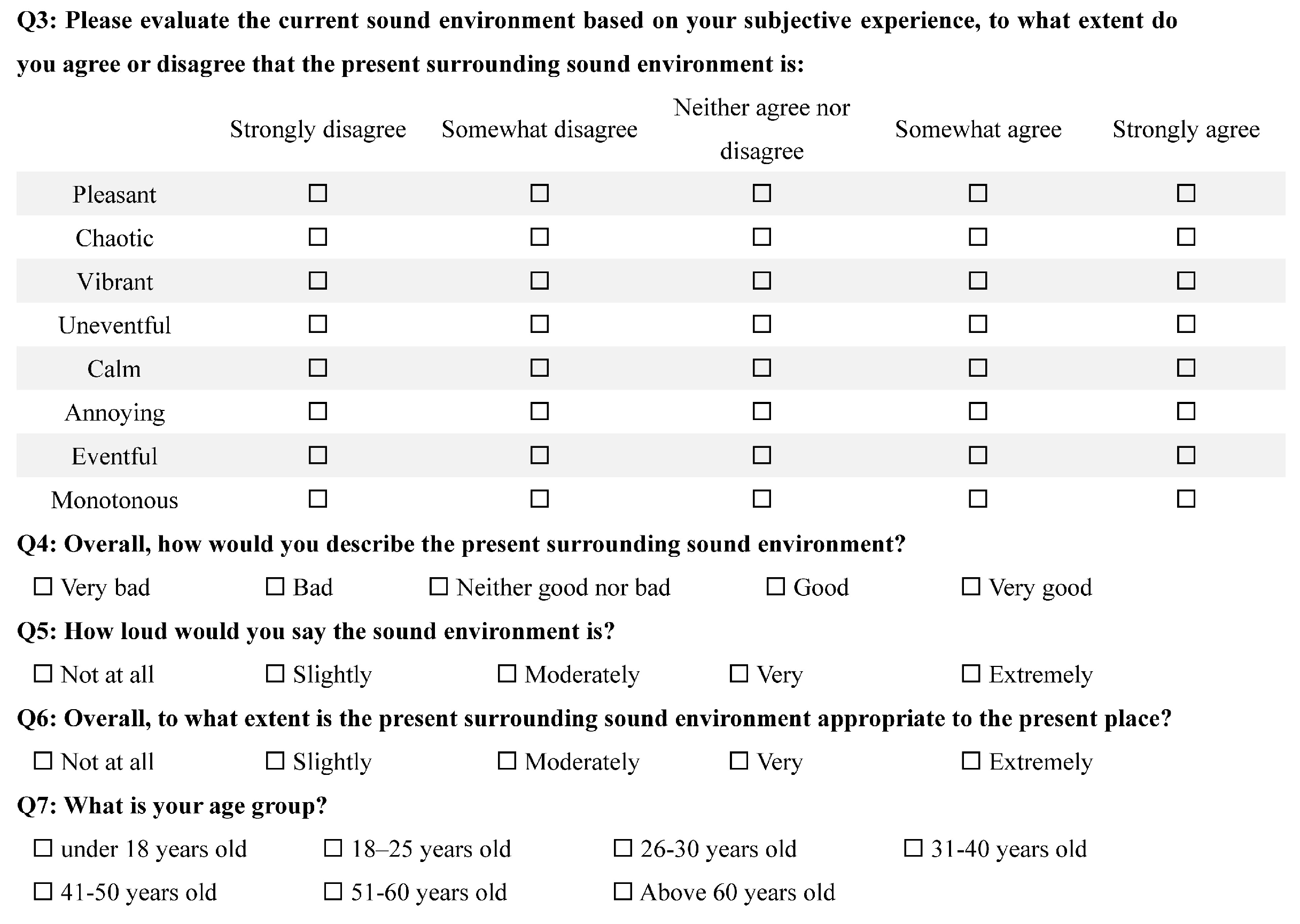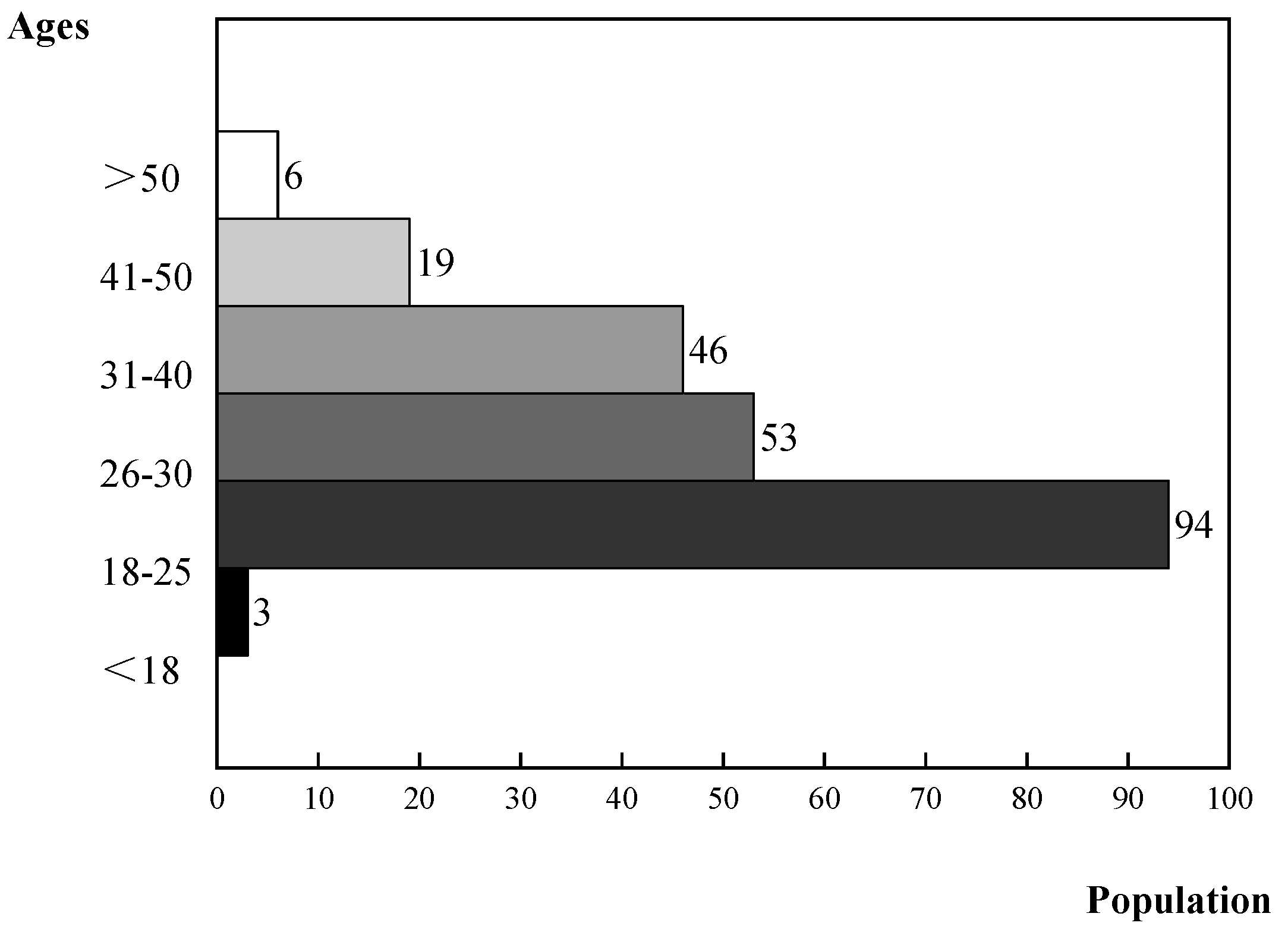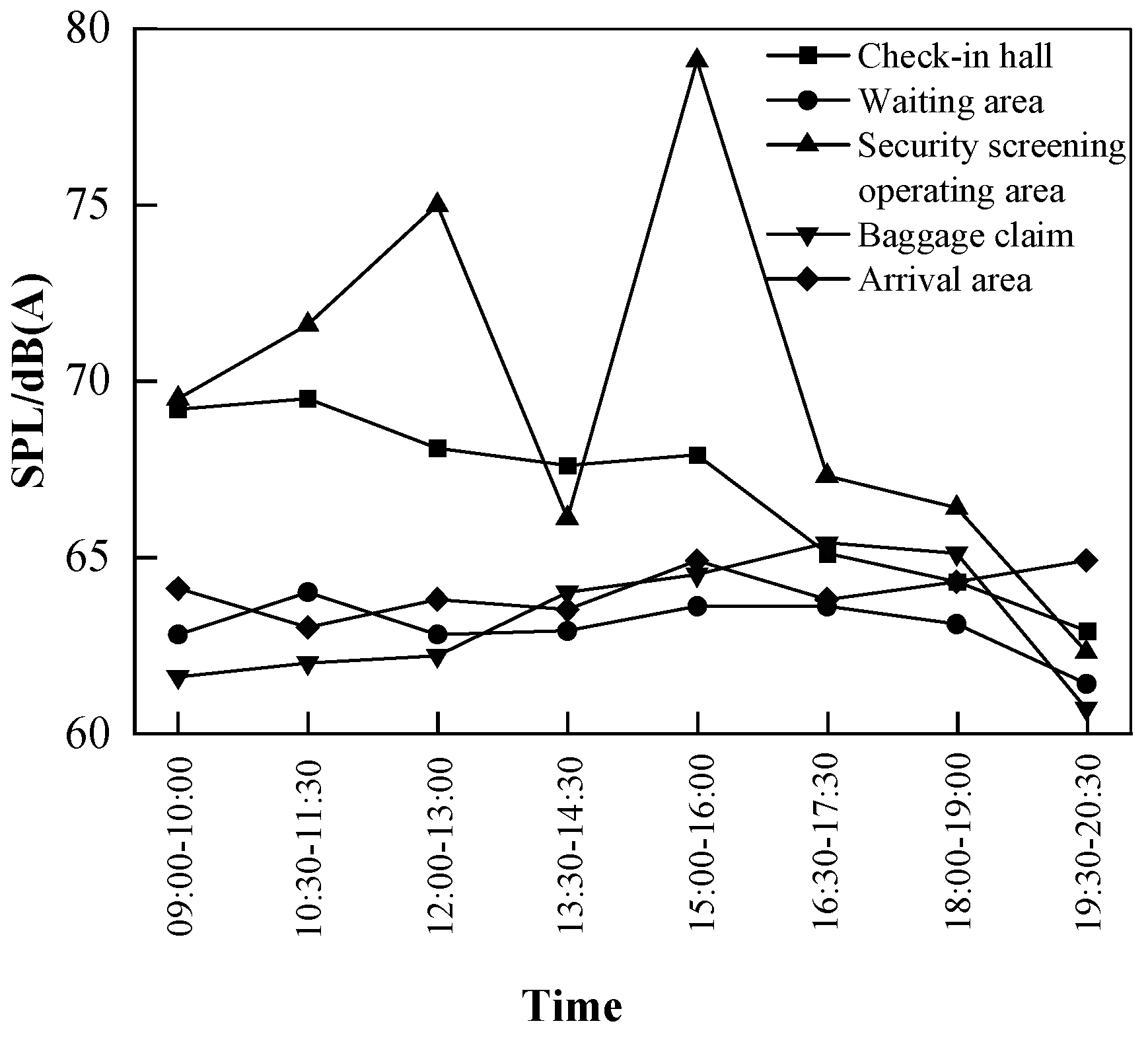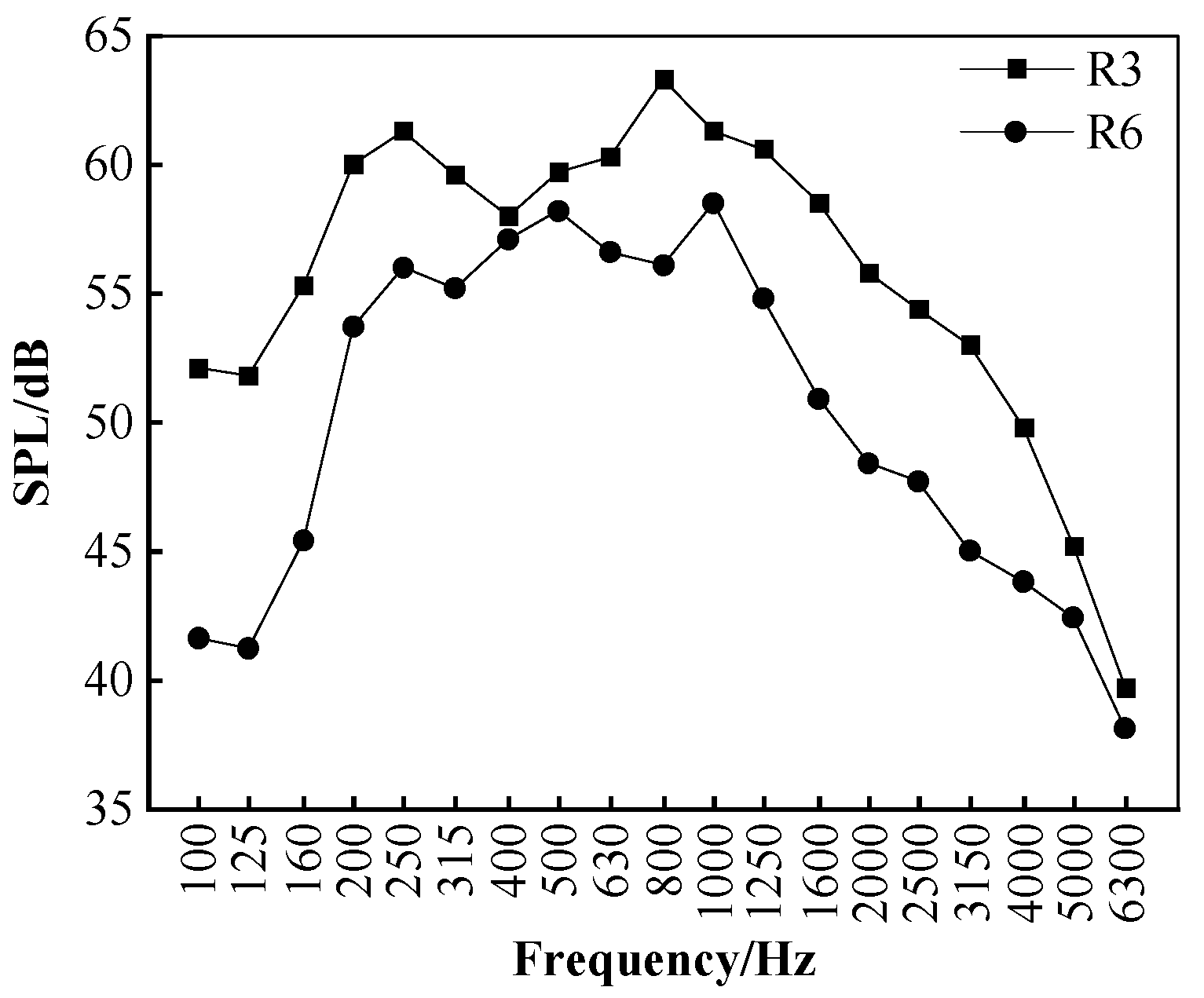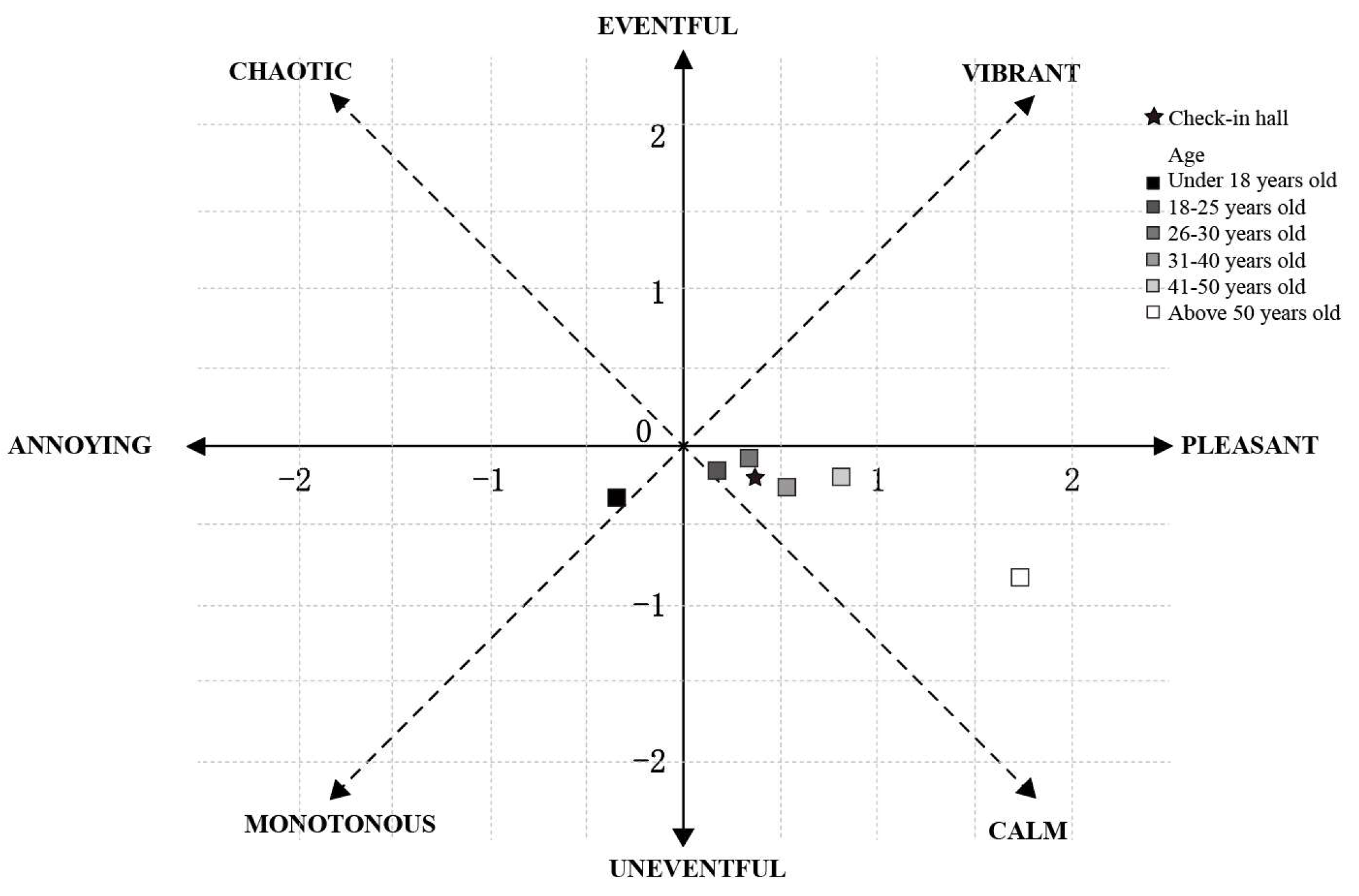1. Introduction
Aviation transportation in China is currently undergoing rapid development [
1]. By the end of 2021, a total of 248 airports had handled an impressive passenger throughput of 907 million [
2]. The terminal, acting as a pivotal link between the landside and airside, serves not only as the central location for passengers during air travel but also plays a significant role in facilitating formalities, security screening operations, and other essential services for staff [
3]. In the terminal, the acoustic environment is a vital component of the indoor environment [
4], affecting the realization of the space function [
5], occupants’ experiences and feelings [
6,
7,
8,
9], and even evacuation in an emergency.
The acoustic environment of large spaces was found to be different from the general spaces. As the volume of the space increased, the sound field appeared to have some obvious inconsistencies with the assumption of diffuse [
10]. It was also found that people’s perceptions of the acoustic environment varied depending on the spatial function [
4]. Currently, research on the acoustic environment of large spaces is mainly focused on high-speed rail stations [
11,
12], sports buildings [
4], dining spaces [
13,
14], and shopping malls [
15,
16].
A comprehensive study by Du et al. [
11] on the indoor environment of several high-speed railway stations found that among indoor thermal, natural, acoustic, and air environments, the acoustic environment has the greatest impact on passengers’ comfort. Similarly, Wu et al.’s [
12] study on the acoustic environment of Chinese high-speed railway stations also revealed that various dominant sounds in different spaces lead to different evaluations of acoustic comfort. Rychtarikova [
17] proposed a set of measurable monaural and binaural acoustic parameters based on the study of atrium spaces to describe the acoustic comfort of large halls. Chen et al.’s [
4] research found that most sounds in sports buildings bring positive feelings to occupants, which is different from that in high-speed railway station waiting halls and exhibition halls. Furthermore, Chen et al.’s [
13] questionnaire survey on two typical large-scale dining spaces found that the loudness, clarity, noise level, and preference of sounds are factors affecting customers’ evaluation of auditory comfort. Mistar et al. [
14] developed a conceptual framework for classifying restaurant and identifying factors that affect auditory comfort. Chen et al. [
15] and Alnuman et al. [
16] conducted measurements of objective acoustic parameters such as sound pressure level (SPL) and reverberation time in shopping centers. Additionally, they conducted questionnaire surveys among the occupants to identify the primary factors influencing acoustic comfort and the impact of noise. Overall, acoustic comfort is a commonly used indicator for evaluating the acoustic environment in large spaces, and research in this area aims to improve the acoustic comfort of spaces through measurement and subjective evaluation.
Noise has always been a major environmental problem at airports [
18], and research on the acoustic environment of airports mainly focuses on the external acoustic characteristics [
19,
20] and impacts on the surrounding environment. Airport terminals are typically large spaces with complex ambient acoustic environments [
21,
22]. However, research on this topic is very limited. Extensive research [
23,
24,
25] in other types of buildings has demonstrated the significant impact of indoor environments on occupant comfort and satisfaction, with noise being a factor that cannot be ignored in this process. Research has shown that noise can increase people’s tension and anxiety [
23,
25] and can interfere with communication and hearing [
24]. Passengers are exposed to various types of noise during their travels, such as aircraft noise, crowd noise, and the sound of luggage and footsteps. Passengers may need to raise their voices to hear others clearly, which can result in increased sound and higher noise levels [
26,
27,
28]. This effect is called the “Lombard effect”, and ultimately this phenomenon will affect passengers’ travel experience and satisfaction.
A few studies have investigated the acoustic environment of terminal buildings. Wijingaarden et al. [
9] measured the background noise level in the terminal of Schiphol Airport in the Netherlands. The measurement results show that the overall sound pressure level is between 55 dB (A) to 70 dB (A). Although the SPL in different areas has significant differences in value, the spectra is very similar. The research of Sayed [
7] shows that the SPL in the terminal of Cairo Airport varies greatly throughout the day, and the staff’s satisfaction with the acoustic environment is very low. In China, Geng et al. [
8] conducted a short-term measurement of the SPL of the terminal buildings in eight Chinese airports. Through investigating the subjective evaluation of passengers on the indoor physical environment, the author found that out of several indoor environment indicators, the satisfaction of the acoustic environment of eight airports is the lowest. Li et al. [
29] conducted measurements in the waiting halls of five terminal buildings in China, and the results showed a significant negative correlation between SPL and passengers’ evaluation of loudness and auditory comfort. People’s perception of acoustic environments is not independently reliant on sound pressure level, it is also affected by the activities in the space and other factors of the environment. Therefore, conducting subjective surveys to gain in-depth insights into how individuals perceive acoustic environments in these unique spaces is necessary to enrich the field of research on acoustic environment perception in special spaces and to comprehend the acoustic environment requirements in certain contexts.
Therefore, for a country with a substantial passenger throughput, there is insufficient research of the acoustic environment of airport terminals in China. This study aims to address this gap by providing an insight into the current state of acoustic environments in airport terminals. This article takes the T2 terminal of Tianjin Binhai International Airport as the research object and intends to investigate its acoustic environment through on-site measurement and subjective evaluation to obtain the distribution characteristics of noise in different areas, and to understand the perception and attitudes of passengers towards the acoustic environment. This provides theoretical support for improving the acoustic environment of terminals in China.
5. Conclusions
Through an on-site measurement and questionnaire survey, the acoustic environment in the T2 terminal of Tianjin Binhai International Airport was investigated. For the acoustic environment within the terminals over a day, the variation in SPL is highly significant. SPL exhibits periodic changes, and the overall SPL is between 60.7 dB (A) and 79.1 dB (A). There are significant differences in SPL, spectrum, and psychoacoustic parameters in different areas of the terminal, which provide insights into whether the current acoustic focus in different areas is on noise control or acoustic comfort. From the perspective of noise control, the spaces that needed to be focused on are the security screening operating area and check-in hall, which have the highest SPL and the largest fluctuation throughout the day.
The results of the subjective survey offer methods to enhance acoustic comfort by creating a distinctive soundscape and control sound sources. Results show that the sound environment of the terminal is in the fourth quadrant of the perceived affective quality model, but the low values indicate a lack of eventfulness and pleasantness. Nearly two-thirds of passengers are dissatisfied with the quality, loudness, and coordination of the sound environment. In terms of specific sounds, passengers have the highest perceived loudness and preference for public announcement, but higher levels of it can result in negative evaluations. The evaluation of crowd conversation sound reflects passengers’ adaptation to higher noise levels in the terminal. Aircraft and footstep sounds do not significantly affect the overall evaluation of the sound environment due to their lower perceived loudness, but the absence of these two sounds significantly improves the evaluation. Analysis of age factors shows that younger passengers perceive less vitality provided by the sound environment.
